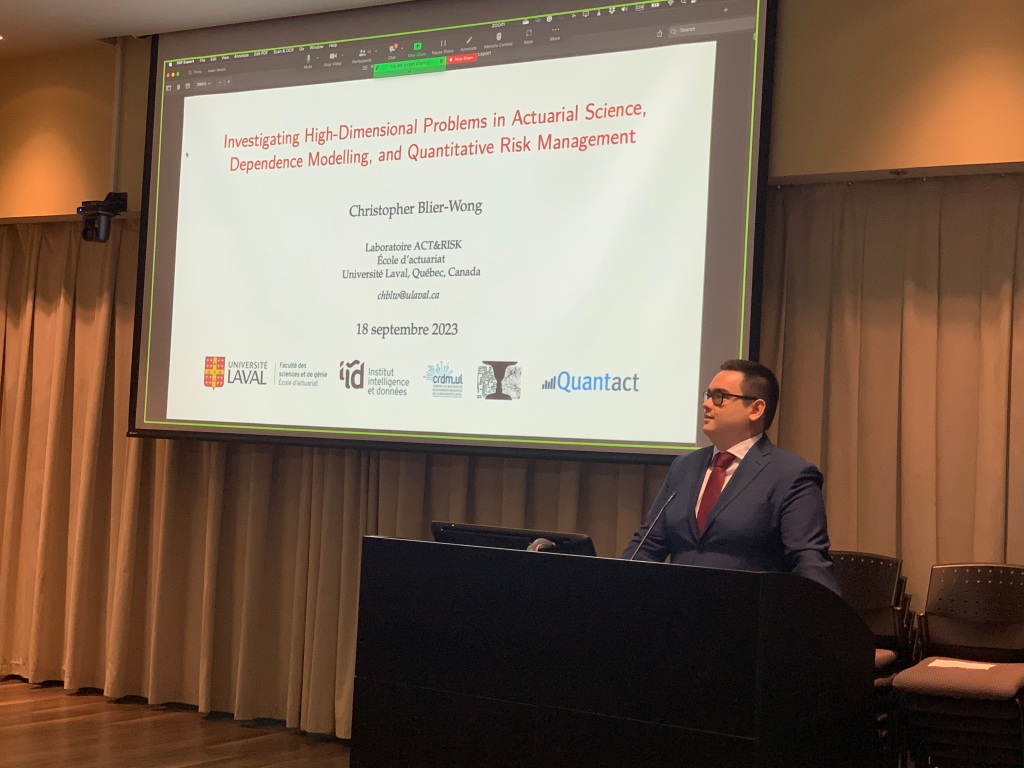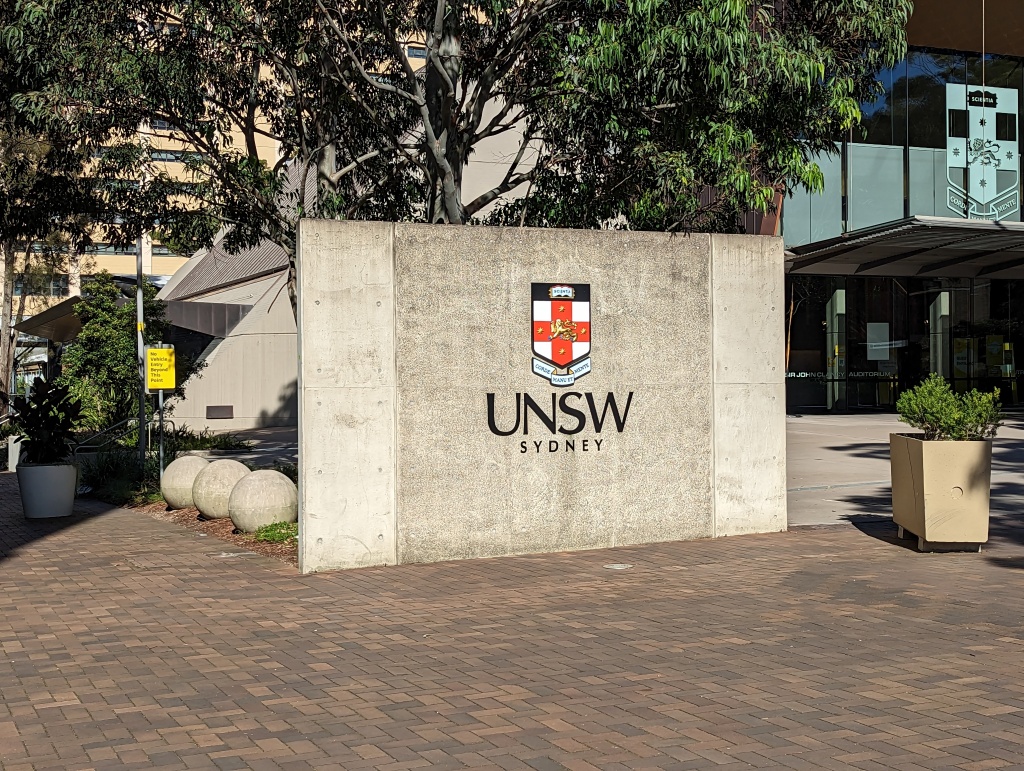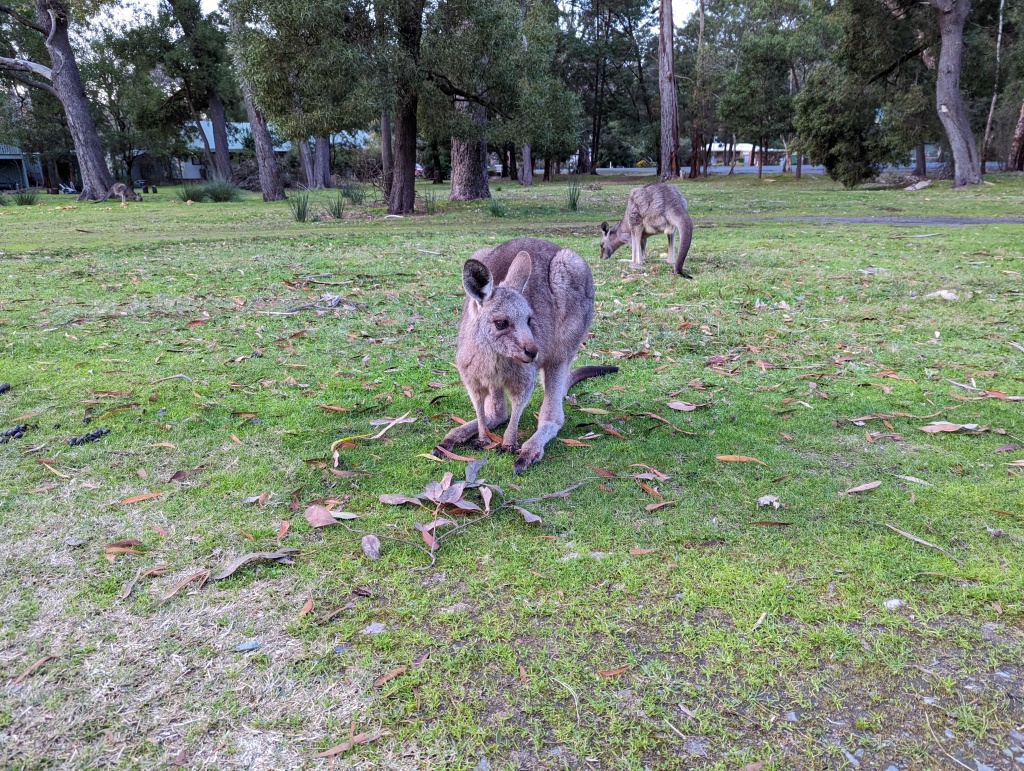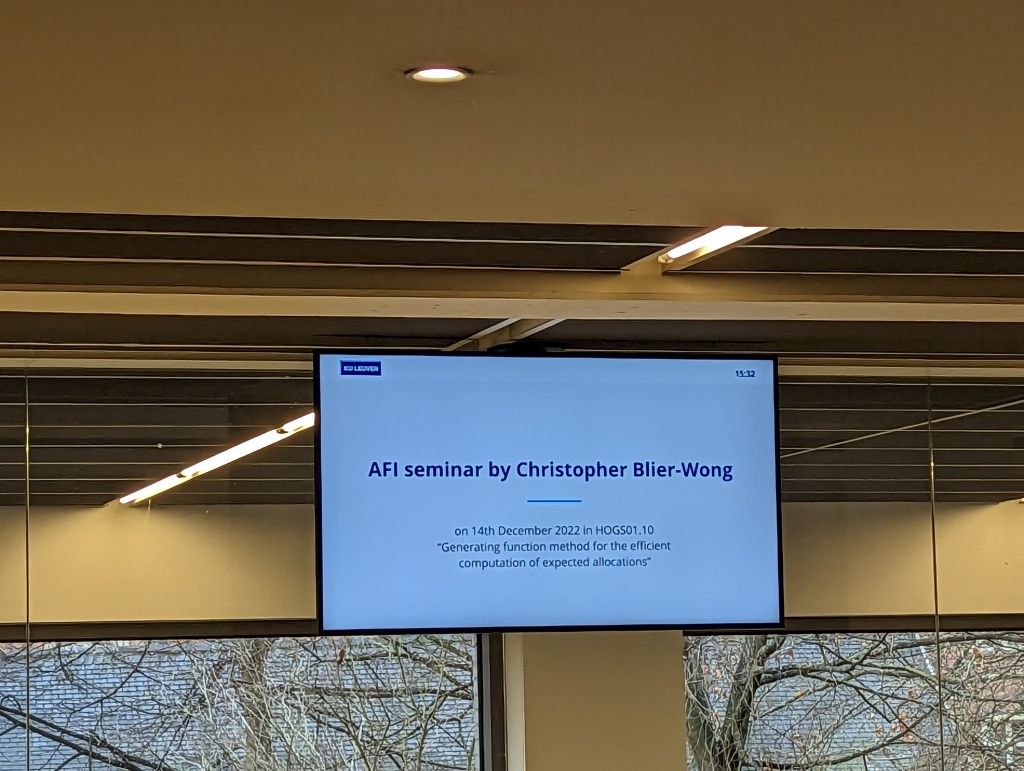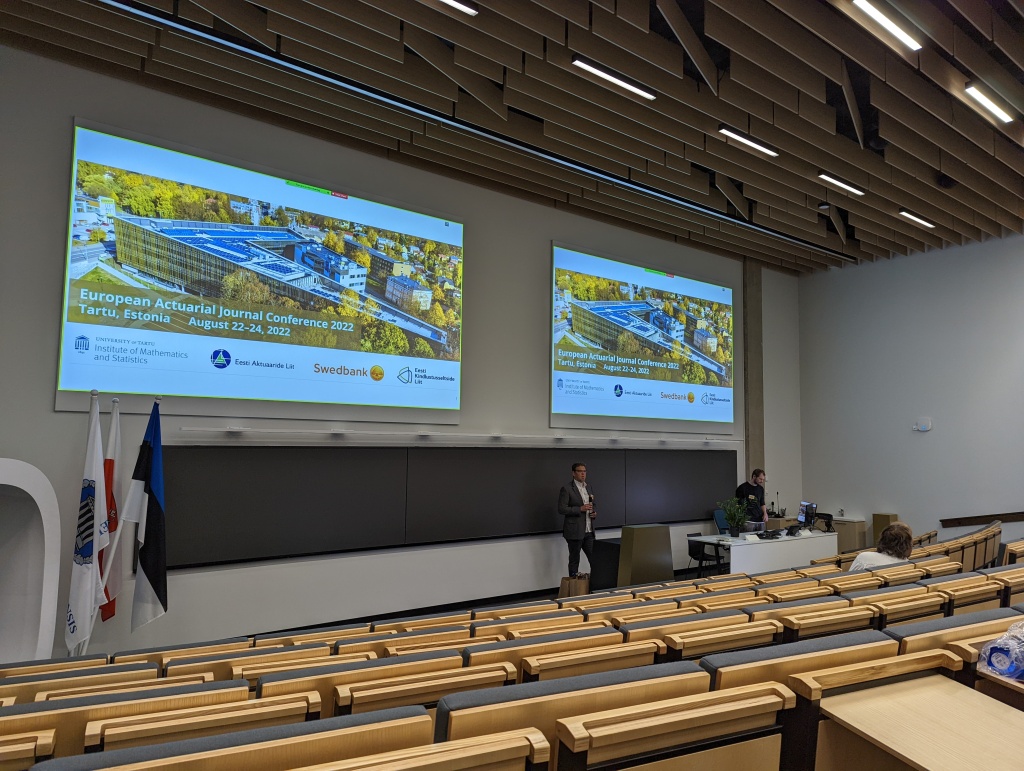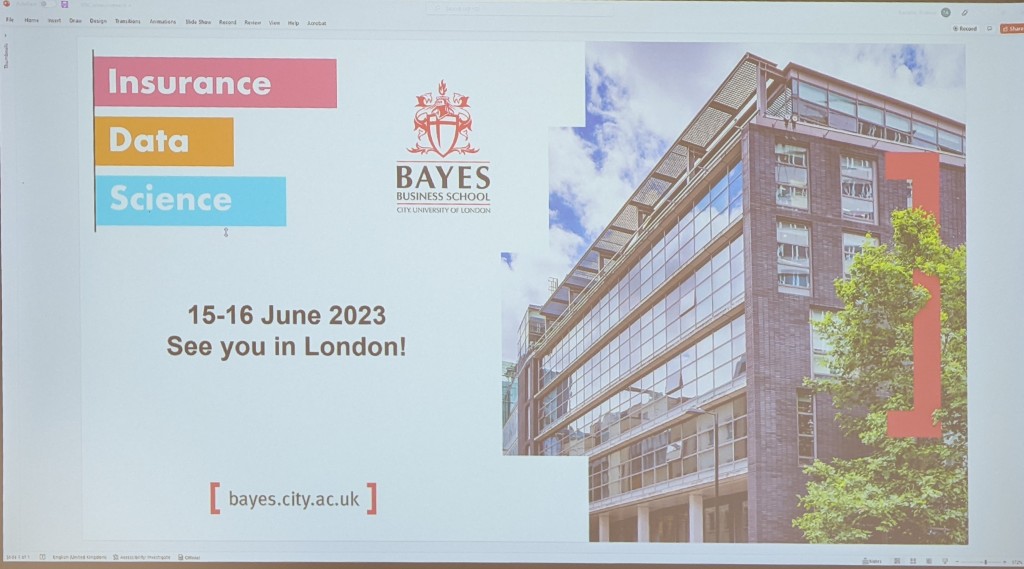My paper on the stochastic representation of Farlie-Gumbel-Morgenstern (FGM) copulas has just been accepted to Computational Statistics and Data Analysis. This is joint work with my PhD supervisors Hélène Cossette and Etienne Marceau.
The FGM copula is one of the oldest implicit copulas. While easy to analyze mathematically, this copula did not have a probabilistic interpretation, limiting its application in high-dimensional statistical applications. This paper proves a one-to-one correspondence between the class of FGM copulas and multivariate symmetric Bernoulli random variables. The representation allows us to derive new results on dependence ordering and measures of association. Further, we propose new subfamilies of parsimonious FGM copulas. Finally, we explore sampling procedures, which enable us to perform high-dimensional simulation for some subfamilies of FGM copulas.
This is the first paper in our series on FGM copulas, stay tuned for more contributions in applied probability, actuarial science and high-dimensional statistics.
Link: https://authors.elsevier.com/c/1e~Fl_3qPK302M
